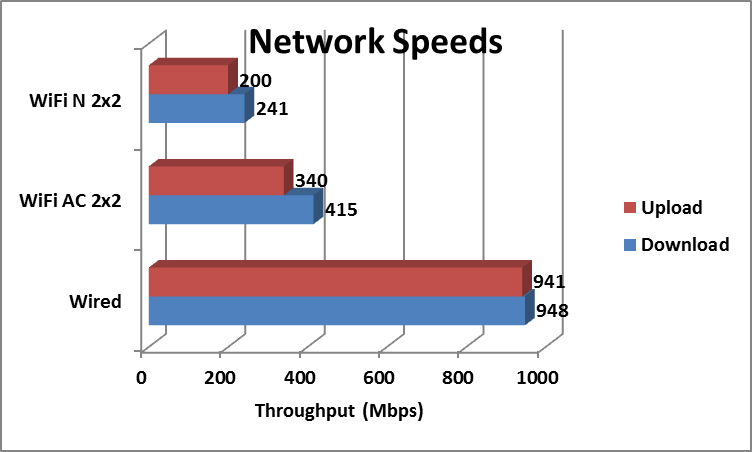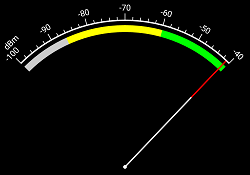When it comes to wireless or Wi-Fi network speed, most people think that purchasing a new router will automatically give them a faster Wi-Fi network. However, most don’t realize that the router is only one of two pieces that determine a Wi-Fi network speed. The other piece that is often forgotten is the wireless device. Together, the router and wireless device determines the actual Wi-Fi network speed with the slower one being the limiting factor. So before you run out and buy the latest AC router, take an inventory of all your wireless devices to see if they can actually take advantage of the router’s faster Wi-Fi capabilities.
Two main features you should look for when reviewing your wireless devices is their wireless specifications and their antenna configuration. The wireless specification will say if they support the N (802.11n) or AC (802.11ac) wireless standards. The antenna configuration like 1x1, 2x2, or 3x3 will tell you how many antennas and how many data streams are supported. For example, 2x2, means two antennas supporting two data streams (a.ka. MIMO for multiple-input multiple-output). Knowing your wireless devices technical specifications will give you a good idea as to what kind of Wi-Fi speed you can expect to achieve.
Here is a table to summarize the theoretical speeds of the 802.11n and 802.11ac standards:
| Antenna Configuration | 802.11n Max Speed | 802.11n Devices | 802.11ac Max Speed | 802.11ac Devices |
| 1x1 | 150 Mbps | Galaxy S3 | 433 Mbps | Samsung Galaxy S4, Apple iPhone 6 |
| 2x2 | 300 Mbps | iPad mini 2 | 867 Mbps | Galaxy S5, iPhone 6s, iPad mini 4 |
| 3x3 | 450 Mbps | NA | 1300 Mbps | MacBook Pro (Retina) |
| 4x4 | 600 Mbps | NA | 1733 Mbps | NA |
Wireless devices with more than 2x2 configurations are practically non-existent with the exception of a few wireless PCI-E adapter cards for desktop systems and the MacBook Pro - Retina. Real world Wi-Fi speeds are nowhere near the theoretical speeds listed in the table, but they are still faster than most Internet service. Unfortunately, for those in Longmont who is lucky to have NextLight, the city’s gigabit fiber Internet service, the bottleneck is no longer your Internet connection but your slowest Wi-Fi device.
Wireless Speed with NextLight Service
 Here at 802.Tech4U, with NextLight Internet service and a NETGEAR Nighthawk R7000 AC1900 router, our Wi-Fi speed using the SpeedTest app on a Samsung Galaxy S5 hovers around 170Mbps download and 300Mbps upload. That is far below the theoretical speed of 867Mbps for an 802.11ac 2x2 device.
Here at 802.Tech4U, with NextLight Internet service and a NETGEAR Nighthawk R7000 AC1900 router, our Wi-Fi speed using the SpeedTest app on a Samsung Galaxy S5 hovers around 170Mbps download and 300Mbps upload. That is far below the theoretical speed of 867Mbps for an 802.11ac 2x2 device.
Consequently, running a speed test from an 802.11n 2x2 laptop using the SpeedTest.net web site also shows the download to be 170Mbps and upload to be 200Mbps. A download wireless speed of 170Mbps seems reasonable for an 802.11n 2x2 connection, but looks to be too slow for an 802.11ac 2x2 connections.
So we decided to test the wireless speed using iPerf3, a tool to measure the maximum achievable throughput on IP networks. With iPerf3, we were able to saturate our wireless connection between the router and the S5 smartphone to achieve throughputs of about 415Mbps download and 340 upload. It appears that SpeedTest was not able to saturate the wireless network on the download test to give a reliable speed reading. So even with the right router and wireless device, you have to be aware if the tool you are using to test your wireless network is giving you accurate readings.
802.Tech4U provides wireless network configurations, optimizations and testings to help you achieve the best wireless performance for your environment.

